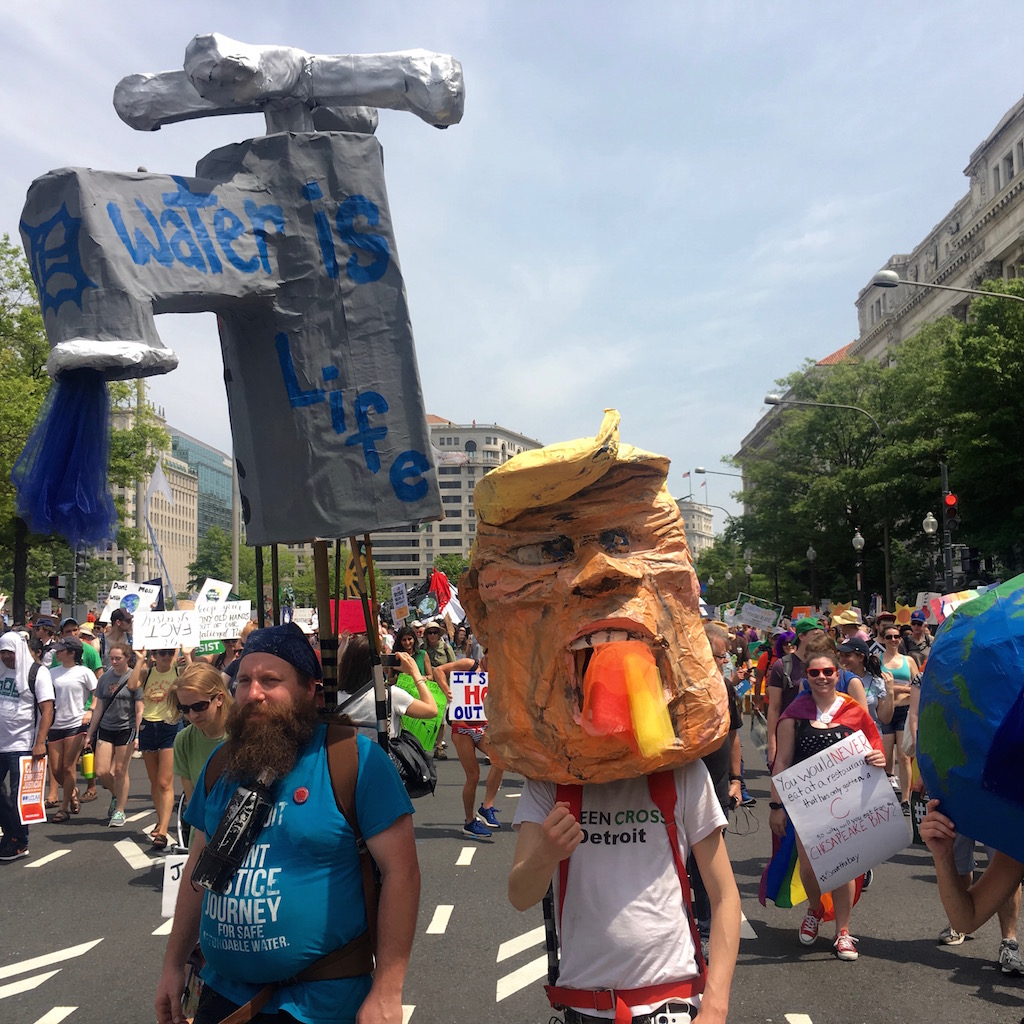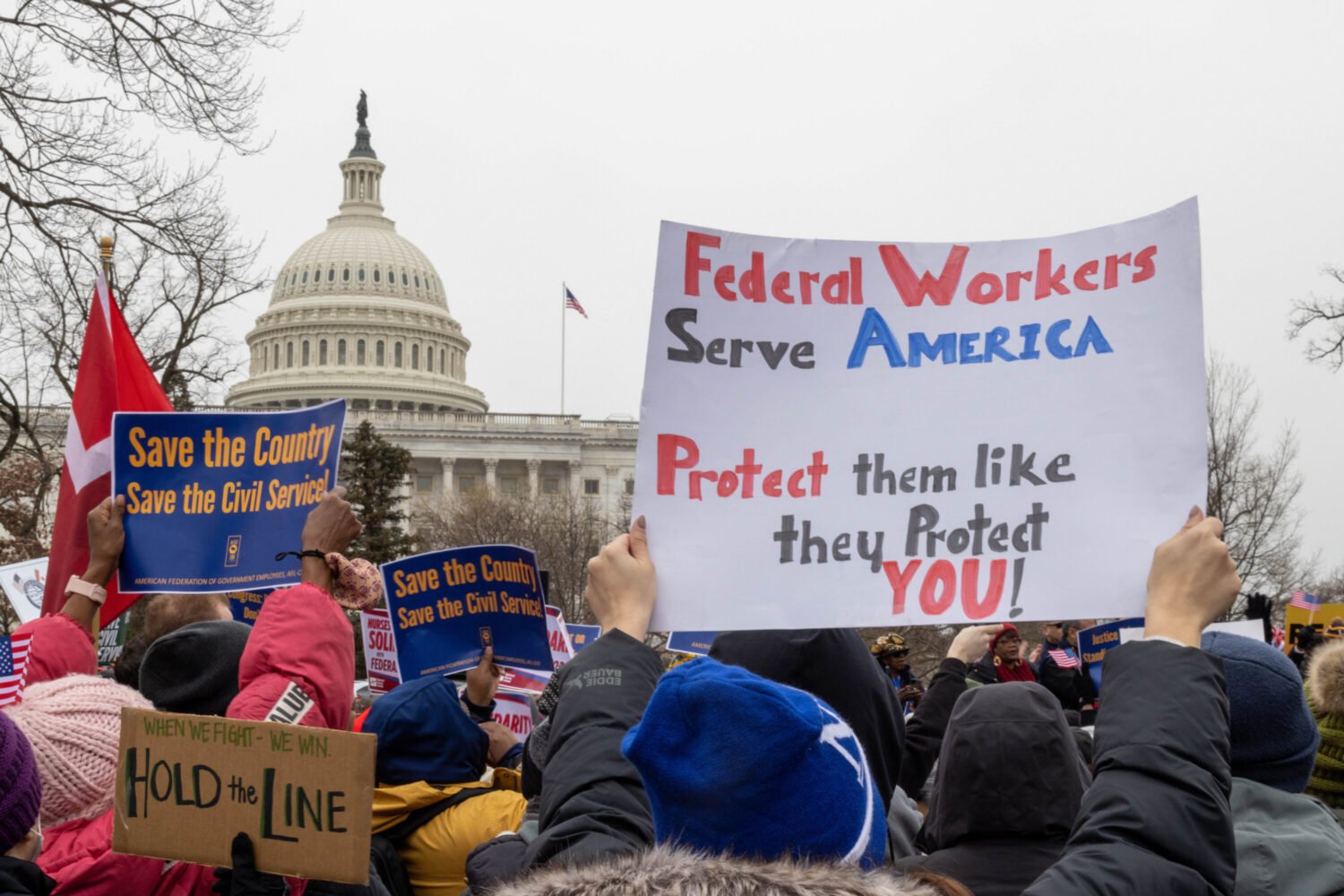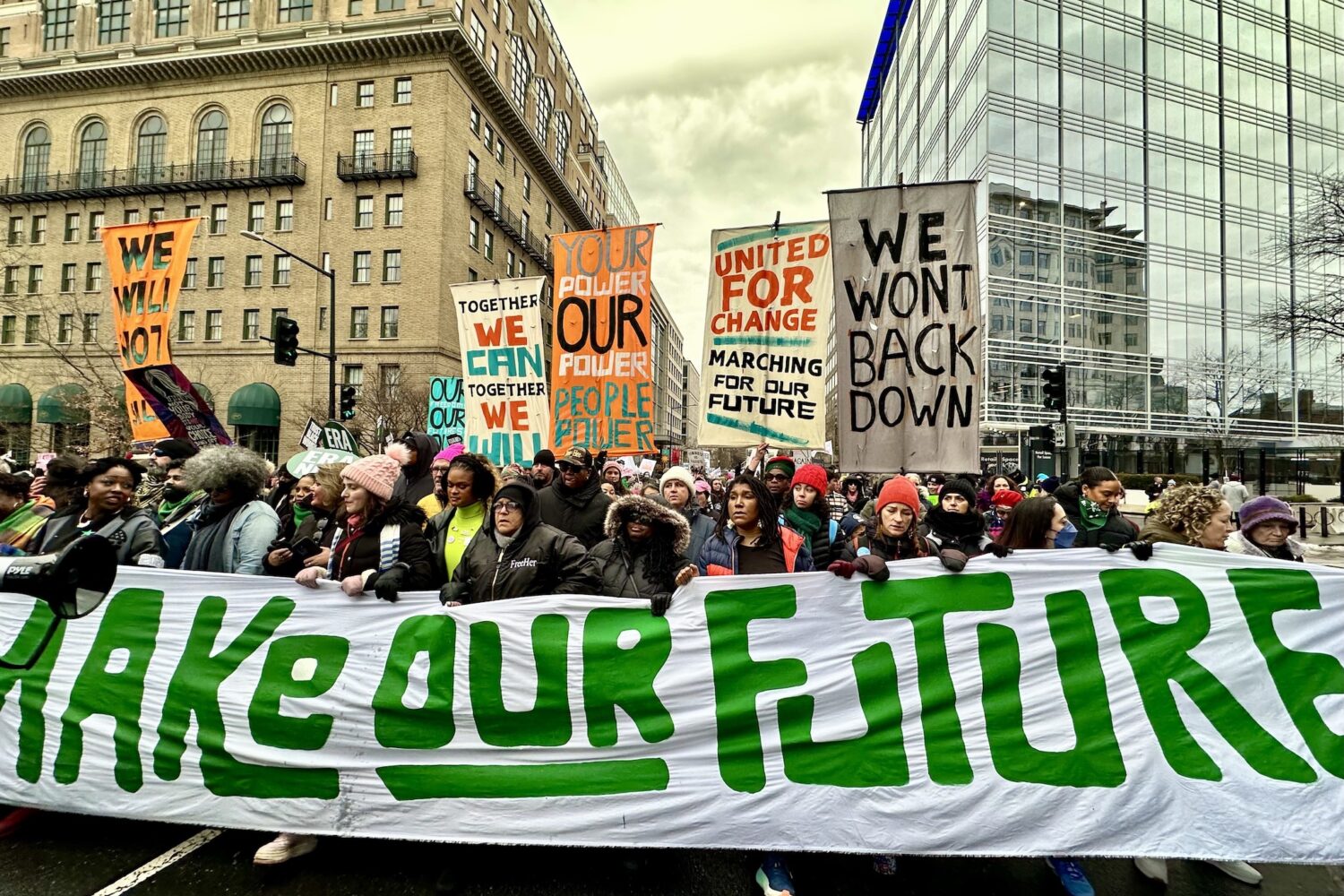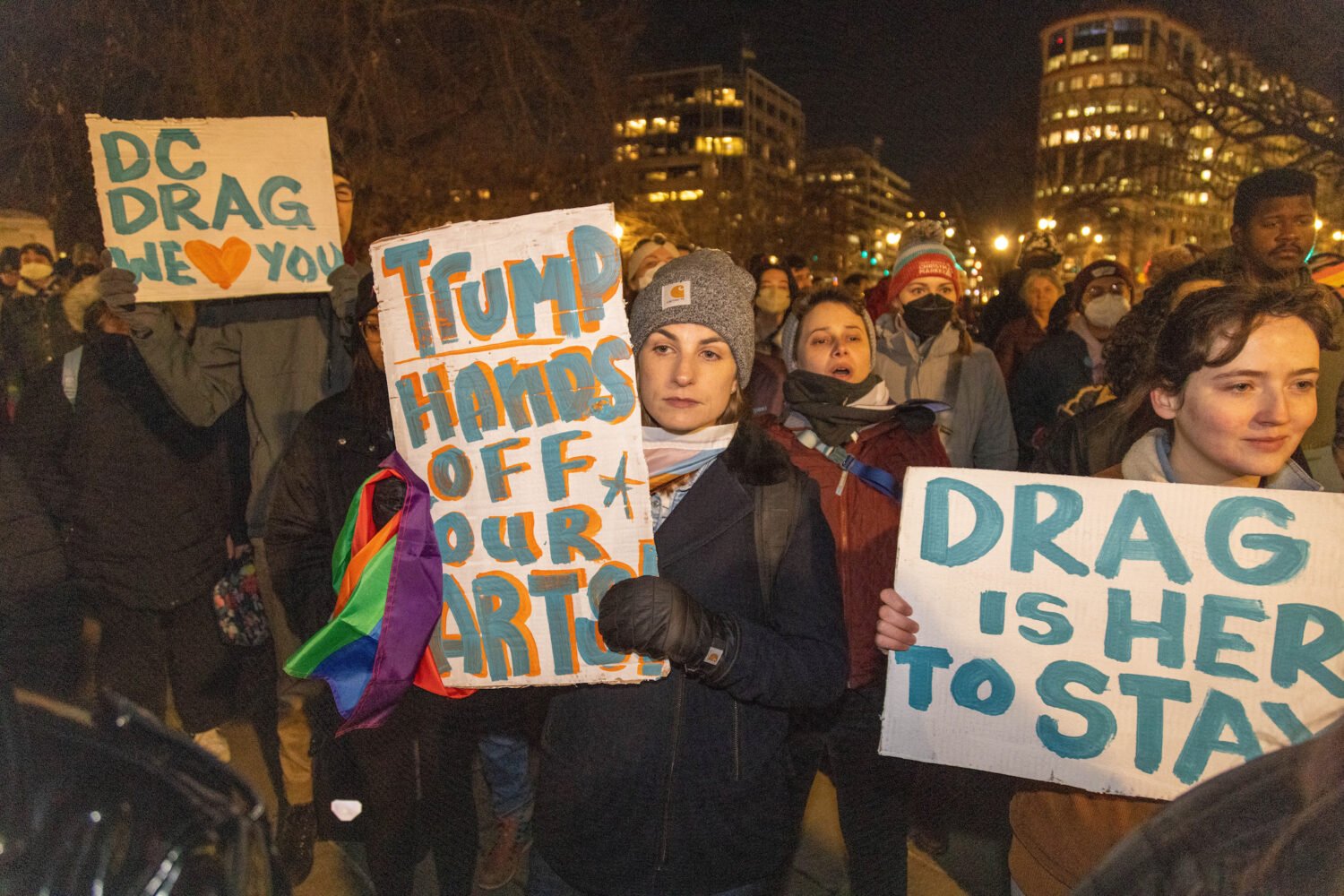Around 200,ooo people hailing from all over the US marched down Pennsylvania Avenue Saturday to demand action on climate change and to push for environmental protections. Fittingly, the temperature climbed to 91 degrees by mid-afternoon, tying a Washington heat record for April 29 set in 1974.
“I just had a child and I’m marching for her but also for me and everyone else. It’s not just a future generations problem, it’s our generation’s problem,” says Nick Brown, who came from Raleigh, North Carolina, for the event. “The current administration is completely ignoring the climate change problem. I don’t think they necessarily believe that it’s a hoax, I think that there are private interests that are paying a lot of money to legislators to spread lies about climate change in order to keep the fossil fuel industry going and make money.”

The event marked President Donald Trump’s hundredth day in office, which has included multiple rollbacks of Barack Obama-era climate policies and environmental protections, as well as threats to pull out of the Paris climate agreement. The EPA took down a website about climate science on Friday evening right before the march, saying all of its climate content was “under review.”

“My husband and I had to come here because Scott Pruitt is now the head of the EPA, and he was our attorney general and we saw the damage he did to Oklahoma,” says Carolyn Meyer, a central Oklahoma resident who also attended last week’s March for Science. “We’re being fracked to death, and it’s causing a lot of earthquakes–nearly daily earthquakes–and we’ve had damage to our house.”

Protesters directed their ire at the Trump International Hotel, hissing and chanting, “Shame! Shame! Shame!” and “We want a leader, not a creepy tweeter!” as they passed by. Trump was in Pennsylvania for a rally during the march. Still, the event wasn’t originally supposed to be partisan. National Coordinator of the People’s Climate Movement Paul Getsos says they began planning before the election, and their aim was to rally support for climate change action.

Dr. Richard Gammon, who teaches chemistry, oceanography, and atmospheric sciences at the University of Washington, says he’s concerned about losing the window to stop warming below two degrees centigrade. “If we wait for four years, the world may not have the chance to stop the warming below a catastrophic level,” Gammon says. “We need a carbon tax or cap and trade. We need a way to put a price on carbon, because it isn’t free. We pay for garbage, we pay for sewage, we’re not paying for this waste product we put in the air.”

Attendees were grouped into eight blocs, with indigenous peoples at the front followed by labor activists and others already dealing with the effects of climate change. Leonardo DiCaprio, Richard Branson, and Al Gore joined in the action. Last weekend’s smaller, more niche March for Science featured scientific researchers, many of whom also showed for this event.

“We’ve got to let people know that climate change is real and ignoring it is just not acceptable. We’ve got children and grandchildren coming up and they’re not going to have a life if we don’t deal with this issue,” says Jackie Doig, who lives in Michigan. “We’re really concerned about dirty oil getting into the Great Lakes; that would be a catastrophe.”
The vibe was friendly but urgent as marchers chanted, “Hey hey, ho ho, Scott Pruitt has got to go,” “Resistance is here to stay, welcome to your 100th day,” and “The oceans are rising and so are we!”

“We’ve come of course, because we’re all immigrants, because we’ve always honored the earth and its resources, and we’re joined with everyone else here to protect our planet,” says Laticia Nixon, an Aztec activist. “Use the facts. Climate change is a reality, it’s not fake news, it’s not alternative facts, just get a grip, Mr. Trump.”














